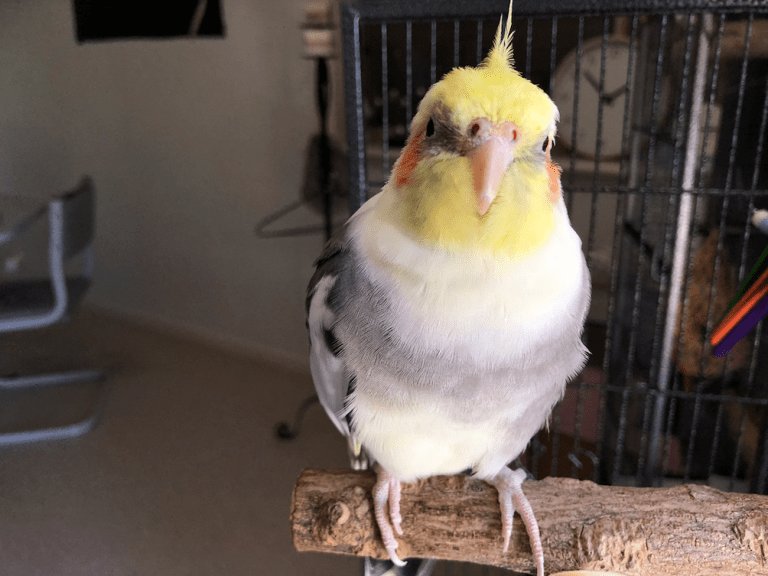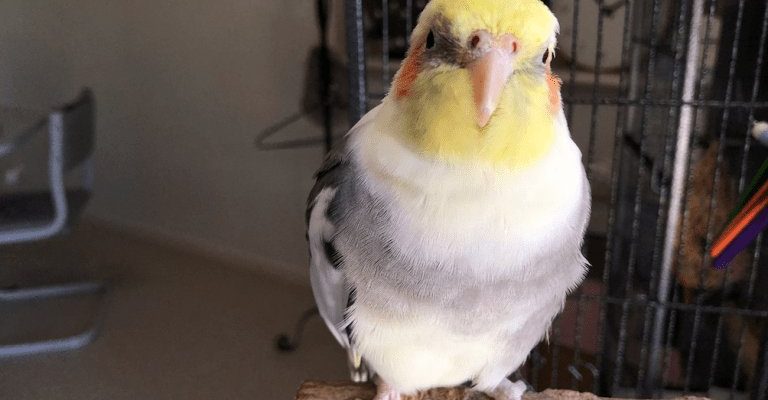
Imagine inviting a new friend into your circle. Would you just throw them into a party without knowing if they’ll get along? Of course not! You’d want to consider their personalities and how they might interact. Similarly, when adding another bird to your home, it’s essential to understand the behaviors and needs of both your cockatiel and the potential new companion. Let’s dive into the specifics of cockatiel friendships with other bird species, exploring what makes a harmonious or challenging mix.
Understanding Cockatiel Temperament
Cockatiels are known for their affectionate and social nature. They’re like the friendly neighbor who brings you cookies—always eager to engage and interact. These charming birds thrive on companionship, whether from humans or other birds. They enjoy chatting, whistling, and even mimicking sounds they hear regularly.
However, it’s essential to recognize that not all cockatiels have the same temperaments. Some are more dominant, while others may be shy or timid. This variability can affect how they interact with other bird species. If you’re considering introducing a new bird, take note of your cockatiel’s personality. Does he or she enjoy being the center of attention, or do they prefer a quieter environment? Understanding these traits can help ensure a smoother introduction.
Furthermore, the age and upbringing of your cockatiel matter. Younger birds are generally more adaptable and curious, while older birds might stick to familiar routines. You might be wondering how these behaviors translate into friendships with other birds. Let me explain further.
Choosing Compatible Bird Species
Not every bird species will suit your cockatiel’s vibrant personality. Some birds, like budgerigars (budgies), can be great companions because they share similar social needs and playfulness. On the other hand, larger, more aggressive birds, such as parrots or cockatoos, might not be the best choice due to their dominating behavior and size differences.
Here are a few bird species that can coexist well with cockatiels:
- Budgerigars (Budgies): These small parrots are playful and sociable, much like cockatiels.
- Lovebirds: With their affectionate nature, lovebirds can match cockatiels’ social tendencies.
- Zebra Finches: These small birds are easy to care for and can add a nice dynamic to your cockatiel’s home.
It’s crucial to monitor interactions closely. Even if two species are known to get along, individual birds can have unique personalities that affect their compatibility. Think of it as watching a new sitcom—you have to see how the characters interact before you know if they mesh well.
Isolation Before Introduction
Before bringing a new bird home, it’s a smart move to isolate the new arrival. Think of it as a dating period—giving both birds time to adjust to each other’s presence without full-on interactions. This approach helps prevent any potential health issues, as birds can be carriers of diseases without showing symptoms.
For about two weeks, keep your new bird in a separate cage, but within sight of your cockatiel. This way, they can get acquainted visually while minimizing stress. You’ll also want to take this time to gauge their reactions. Is your cockatiel curious, or does he seem anxious? Understanding these behaviors will give you a better idea of how well they might blend.
During this time, prove to be an attentive caretaker—spend time with both birds, allowing them to hear each others’ chirps and sounds. This setting helps establish familiarity, making the eventual introduction less daunting.
Gradual Introductions
Once the isolation period is over and both birds seem comfortable, it’s time for the big introduction. You’ve made it this far, so think of it as the moment when you finally reveal your new friend at the party. Start by placing the cages close together so they can interact without direct contact. Observe closely—are they fascinated or showing signs of stress?
After a few days, you can let them meet in a neutral space. Here’s the critical part: keep the introduction short and stress-free. It’s not a race! Gradually extend their time together as long as they display positive behaviors, such as curious chirping rather than aggressive posturing.
If you notice any signs of hostility, like biting or screaming, be prepared to separate them and try again later. Patience is key here. Just like building a friendship takes time, so does creating a harmonious environment for your birds.
Creating a Harmonious Living Space
How you set up your birds’ living environment can significantly affect their relationship. Think of it like a cozy home where everyone feels comfortable and safe. Here are some tips for a harmonious setup:
1. Separate Living Spaces: Each bird should have its own cage that’s spacious enough to move around. This helps prevent territorial disputes.
2. Plenty of Perches: Provide various perches at different heights and sizes. This variety allows both birds to find their favorite spot without feeling crowded.
3. Toys and Enrichment: Offer engaging toys—like swings, bells, and climbing structures—that cater to the interests of both species. This encourages them to interact positively while keeping boredom at bay.
4. Balanced Diet: Ensure both birds receive a diet that meets their specific nutritional needs. Healthy birds are happier and less likely to engage in aggressive behavior.
Creating an inviting living space can make all the difference. When your birds are happy, they’re more likely to coexist peacefully, adding joy to your home.
Watch for Signs of Stress or Aggression
Even in ideal conditions, things can go awry. Here’s the thing: birds are sensitive creatures, and their feelings can change quickly. If you notice any signs of stress or aggression, it’s essential to act fast. Signs to watch for include:
– Feather Plucking: A sign of anxiety or stress.
– Chirping or Screaming: High-volume vocalizations can indicate distress or discomfort.
– Aggressive Posturing: If one bird puffs up, lunges, or bites, it’s a clear sign that they’re not happy in the situation.
If you notice these behaviors, separate the birds immediately. Try reintroducing them again after a few days or even weeks if necessary. Don’t be discouraged; some birds simply require more time to adapt.
In summary, while cockatiels can live with other bird species, success largely depends on the individual birds’ personalities and how you manage their introductions and living spaces.
Bringing a new bird into your home can be an enriching experience for both you and your cockatiel. By understanding their temperament, choosing compatible species, and providing a safe and welcoming environment, you increase the chances of a happy coexistence. Remember that patience is paramount, and it’s okay to take things slow.
In the end, guiding your birds toward friendship is much like nurturing human relationships—built on understanding, observation, and a little love. Your cockatiel can bring joy not just to your life but also to another bird’s. So, go ahead and explore the possibility of avian friendship, and enjoy the beautiful symphony of chirps and whistles that can fill your home.

